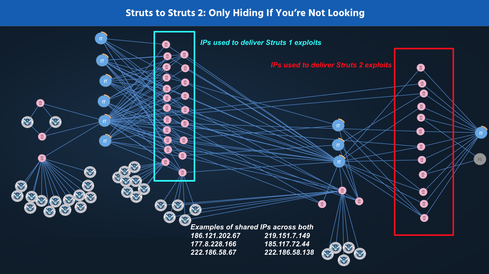Security staff put a lot of emphasis on advanced persistent threats, or APTs, and rightly so. They are extremely difficult to defend against if a hacker is specifically targeting an organization. But with everyone’s focus on APTs, we may be missing a different type of attack vector: advanced persistent infrastructure.

The evolution of the Apache Struts vulnerability is a good example of how threat actors use advanced persistent infrastructure as an attack vector. In 2014, there were initial reports of exploits against the Struts vulnerability. In early 2017, new exploits were discovered in a Struts 2 vulnerability. We noticed the two exploits followed a very distinct pattern.
This lead to some interesting observations:
-
Tactics May Change But IPs Don’t. Unless they are a member of a big crime organization, most bad guys don’t have the money to buy new IP addresses and domains over and over again. Hence, when an IP address comes online we should know exactly what it is tied to and its history.
-
Hackers Feed on the Lazy. The connections between Struts 1 and Struts 2 created a new reality: as is often the case, when a new zero-day exploit is reported, organizations are slow to move on patching these things. The bad guys know they have to act quickly to make use of the exploit. What they do is simply retool their favorite form of malware, and then use the infrastructure access they have in place, like IPs and domains, to launch the new attacks.
By understanding how bad guys reuse infrastructure, you’ll have a better idea of the areas of your network to target when investigating a new threat, especially when it is a reiteration of an old malware.
